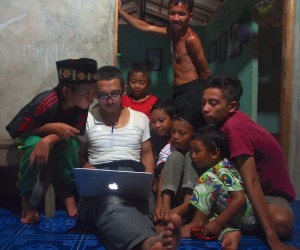Deep underground in rural Victoria, Matteo Volpi is searching for evidence of the cosmic glue that holds the Universe together: dark matter.
Matteo is taking the initial measurements for the study at Stawell Gold Mine where an international team is set to construct a $3.5 million laboratory more than a kilometre underground.

Understanding dark matter is regarded as one of the most important questions of modern particle physics.
“If we nail it, it’s a Nobel Prize winning experiment,” says the project leader Elisabetta Barberio, a University of Melbourne physicist and chief investigator of the Australian Research Council Centre of Excellence for Particle Physics at the Terascale (CoEPP).
















